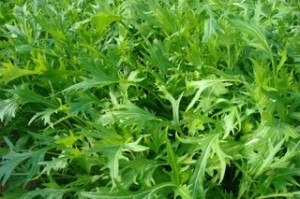 This week’s harvest: zucchini, lettuce, cilantro, tomatoes, cucumber, dill, sweet red and white onions, kale, chard, eggplant (group A), strawberries (group B)
This week’s harvest: zucchini, lettuce, cilantro, tomatoes, cucumber, dill, sweet red and white onions, kale, chard, eggplant (group A), strawberries (group B)
“You are what you eat”, we’ve heard it from day one. As farmers, we are often asked about our diet. We have the opportunity to witness the differences between growing vegetables in poor vs. nutritious soil and there is overwhelming evidence that nutrition affects our health as well. Though the science of nutrition is in its infancy, we are bombarded with information about what we should and shouldn’t be eating and it can be difficult to know what to listen to. Some diets recommend veganism, others promote eating grass fed meat and dairy. But, what we all seem to agree on is this: eat your vegetables and eat lots of them. In the history of diets, I can’t think of one that cuts out vegetables.
Some of the healthiest plants for us are brassicas. Brassicas include kale, cabbage, cauliflower, broccoli, kohlrabi, turnips, brussel sprouts, and mustard greens (like arugula, mizuna, tat soi). You may have noticed how spicy our arugula is in mid-summer (it will sweeten again as temperatures cool), but it is the spice in them that makes them so good for you. Brassicas are rich in sulfur containing antioxidants, vitamin C, carotenoids, and immune-boosting properties (antiviral, antibacterial, and anticancer activity). And, like onions and garlic, research shows that lightly cooking the brassicas maximizes the availability of the sulfur compounds. Lightly stir-frying or steaming vegetables and adding a few herbs and seasonings is the go-to meal in our house. Tonight, I dipped 12 giant kale bundles into steaming water, chopped them up, and fit them all into 2 ziplock freezer bags!
We’ve learned a few things about how to grow brassicas this year (brassicas are particularly prone to problems, perhaps because insects find them so nutritious)!
First, in June and July, it is absolutely essential to cover brassicas with remay to protect them from flea beetles. Fortunately flea beetles in Durango only have one life cycle per year so we can uncover the brassicas by August.
Second, aphids and sulfur butterfly caterpillars love brassicas. Attracting beneficials to the garden to eat these larval pests is crucial!
Finally, healthy plants do not get sick. Maintaining proper soil moisture and fertility is crucial to keeping the bugs at bay. Proper plant spacing to encourage air circulation and access to nutrients is just as important. Older plants are more susceptible to aphids than younger ones and replacing them with successive sowings is necessary later in the season.
Though they may not be the easiest to grow, brassicas pack in the nutrition and we think they are worth the trouble. We are particularly fond of mizuna. It is milder than arugula has and more tender than kale. Nothing matches its versatility; you can eat it fresh, bake or stir-fry it. Plus, it grows year-round in extreme heat and cold so for that reason alone, you are supporting local farmers by eating it.
So before you decide “what’s for dinner”, ask yourself, “Have you had your serving of brassicas today?”
Use up your zucchinis and moisten your corn bread with this seasonal recipe for zucchini corn bread: http://www.epicurious.com/recipes/food/views/Zucchini-Cornbread-366395


Leave a Reply